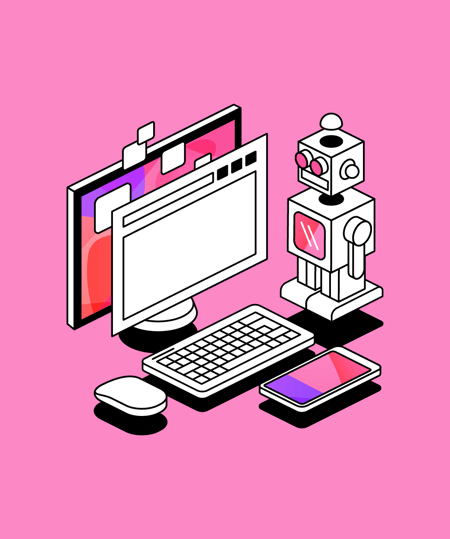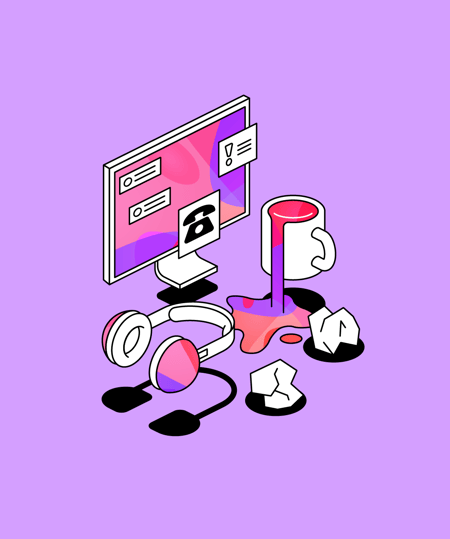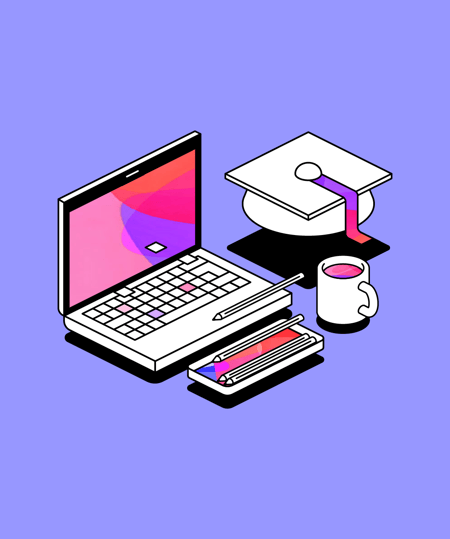The science of remote learning: multitasking and interruptions
Here, Dr. Sue explains how the COVID-19 crisis is forcing students to confront new strains on their attention, and what this might mean for attainment.
 3 min read
3 min read
 Published: 31 Mar 2020
Published: 31 Mar 2020
 Dr. Sue Wilkinson
Dr. Sue Wilkinson


Alongside her quarantine to-do list, our favorite cognitive psychologist is helping us understand the effects of remote learning on students.
Here, Dr. Sue explains how the COVID-19 crisis is forcing students to confront new strains on their attention, and what this might mean for attainment.
Within a couple of weeks, students have had to adapt not only to a new social norm, but also to a new way of accessing and engaging with their education.
Suddenly students used to a bustling university campus, face to face lectures, working in groups, interactive seminars, and social meet ups between classes, find themselves isolated at home, interacting with others solely through technology, and having to engage in much more independent study.
This new way of teaching and learning will bring novel challenges, rarely experienced before now.
How attention works
Attention acts in two ways;
- as a filter to identify what we will attend to within our environment
- and as a management system to restrict what tasks we can do at any one time.
Attention can be…
Selective, whereby we select a particular stimulus and focus all available resources on this, blocking out all irrelevant information that might distract us.
And…
Divided, whereby we appear to be doing two or more tasks at the same time, requiring us to divide our attention between the tasks.
This divided attention is more commonly known as multitasking.
The problem with ‘multitasking’
Modern life forces us to frequently ‘multitask’. Despite this ‘skill’ being viewed as desirable, what is often not recognised is the effect on performance and accuracy when we divide our attention between two or more tasks.
We cannot process all available information at the same time or in parallel, so there are inevitably costs for dividing our attention.
Multitasking does not exist
What is happening is task switching. There is an illusion that we are multitasking because we switch between tasks so quickly that it appears that we are doing the tasks at the same time. In fact, we are not engaged in more than one cognitive task at a time, we are doing the tasks in sequence, constantly switching between the two in such rapid succession that we think we are doing them simultaneously.
The challenge for students
In the current climate, students are having to use more technology and media than before, as their lectures and seminars, group work and all communication now happens online.
Engaging in more than one form of media at any given time, such as listening to a podcast, while researching an assignment, while replying to an email etc. is known as bold text
Research shows that high levels of media multitasking can have a negative effect on academic studies and can increase the likelihood of students being distracted.
Why? Because people who regularly engage with multiple forms of media simultaneously have a stimulus driven attentional bias.
This means that their brain is always on the lookout for new information from their environment, regardless of whether that information is relevant to the task in hand.
Dealing with interruptions
Life is full of interruptions, and many of these originate from the presence and use of technology. Interruptions are different to multitasking as the former occurs when attention is directed away from a task, and the latter occurs when we consciously switch our attention between tasks.
When we are interrupted, we are forced to ‘pause’ the primary task to deal with the interruption before we can return to the primary task.
We have finite cognitive resources, and as a result of this interruption and the direction of attention away from it, the primary task will take us longer to complete, and we even run the risk of abandoning it altogether.
This is an issue that students will be facing now more than ever; trying to juggle their assignments and their learning, with keeping up to date with news and advice, not to mention the added distraction of concern for themselves and others.
This is a real challenge…
As students currently find themselves in more technology-rich environments, they will have a higher preference for task switching and will struggle to sustain their attention on one task.
Many students also fall into the category of ‘high media multitaskers’ meaning that they will use up limited cognitive resources searching for non-relevant information in their environment. They may be trying to listen to their online lectures, while catching up on social media, and writing their assignment. Not only will they recall very little content from the lecture, the quality of their assignment is also likely to be compromised. This will undoubtedly impact on their learning and education.
If you, and those you work with, recognise the unique challenges to learning this crisis represents, you’ve made the first step towards helping students through it.
Keep communicating, and be prepared to make changes to your approach. Flexibility will be very important over the coming period.
We’re all experiencing a real upheaval. But together, we’ll get through it.
We’ll be publishing more content from Dr. Sue in the coming weeks, including strategies to help your students learn better remotely, tips on administering accommodations online and more.
Get Glean for FREE
To help you support your students with note-taking during this time, you can trial Glean for free. To learn more and sign up, click the link below!
More from Supporting Students
View All
 5 min read
5 min read
Understanding and supporting students with barriers in higher education
Take a deeper look into students with barriers to learner. Here, we discuss who they are, what challenges they face and what institutions can do to support them.

 3 min read
3 min read
Understanding and supporting time poor students in higher education
Here, we take a deeper dive into who the time poor learners are, and their unique challenges. Explore strategies to support students juggling multiple roles and responsibilities, to create a more inclusive and flexible learning environment.

 3 min read
3 min read
Navigating the AI landscape in education: Helping or hindering student success
AI has transformed what it means to teach and to learn. It is crucial now for higher education leaders to determine how they deploy AI to help, rather than hinder, student success.





